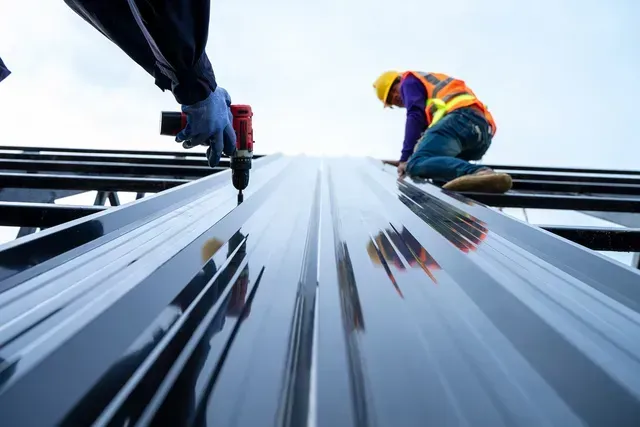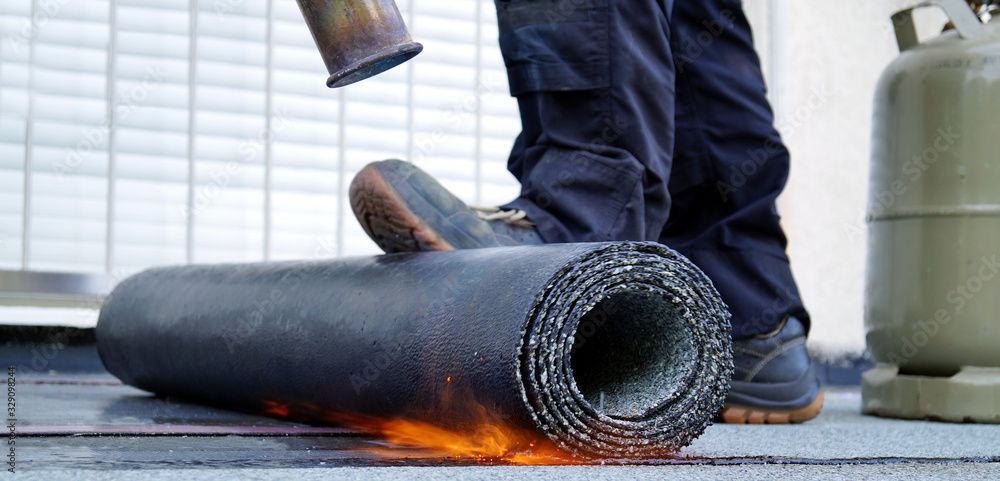Roofing in Landover, MD: Expert Solutions for Quality Home Protection
When it comes to roofing in Landover, MD, homeowners face unique challenges due to the region's distinct climate and weather patterns. Choosing the right materials and roofing services is essential for ensuring durability and protecting your home from the elements. This article explores the local weather, roofing materials, and what to look for when hiring roofing contractors near me in Landover.

Local Weather Conditions and Roofing Needs
Landover, MD, experiences a humid subtropical climate, with hot, humid summers and mild winters. Average summer temperatures range from the mid-80s to low 90s °F, but heatwaves can push temperatures into the upper 90s or even low 100s °F. Winters are generally mild, with average temperatures in the 30s to 40s °F. However, occasional cold snaps can drop temperatures below freezing.
The region also sees a significant amount of rainfall, with an annual average of around 40 inches. Most of this rain occurs in the warmer months, particularly in the spring and summer. During these months, the weather can be particularly humid, which puts additional stress on roofing materials, especially asphalt shingles, which may degrade more quickly due to moisture accumulation.
Snowfall in Landover is usually light but can still be a concern during winter months. On average, the area receives about 6-8 inches of snow annually, with the heaviest snowstorms typically occurring between December and February. Snow accumulation can add weight to roofs, particularly on flat or low-slope roofs, increasing the risk of leaks or structural damage if the roof isn’t properly designed to handle it.
Choosing the Right Roofing Materials
Selecting the right roofing materials in Landover requires understanding the local climate and your home’s needs. Different materials offer varying benefits depending on durability, appearance, and performance.
- Asphalt Shingles: These are the most common roofing material due to their affordability and versatility. Asphalt shingles are weather-resistant, though they may need replacement every 20-30 years.
- Metal Roofing: Metal roofing is an excellent option for homeowners seeking longevity and resistance to wind and snow. Metal roofing can last up to 50 years and is highly energy-efficient, reflecting heat to keep your home cooler in the summer.
- Tile Roofing: Tile roofing offers a unique, aesthetic appeal and durability. While it’s heavier than other options and requires reinforced structures, tile roofing can last decades and is highly resistant to moisture and high temperatures.
- Wood Shake Shingles: Less common in Landover, wood shake shingles are prized for their natural aesthetic but require regular maintenance to prevent rot and mold growth due to humidity.
Roofing contractors near me can help guide your decision on the best materials for your specific needs and climate.

Selecting a Roofing Contractor in Landover
Choosing a reliable roofing contractor is essential to ensuring your roofing project is successful. The right contractor will have experience handling Landover’s specific weather challenges and be well-versed in local building codes. Here’s what to look for when hiring roofing contractors near me:
- Experience: A contractor with years of experience will be able to handle the nuances of Landover’s climate, from heavy rainfall to high winds and snow accumulation.
- Licensing: Make sure the contractor holds the necessary licenses to operate in Maryland. Licensed contractors are familiar with local codes and regulations.
- Insurance: The contractor should carry liability and worker’s compensation insurance, which protects both you and the workers in case of accidents or damage during the job.
- Reputation: A roofing contractor with a strong reputation in the community will have positive reviews and testimonials. Ask for references from past clients to ensure the quality of their work.
- Roof Repair Near Me: Look for contractors that offer comprehensive repair services, from patching leaks to replacing damaged shingles. Regular repairs can extend the life of your roof and help avoid costly replacements.
Roof Repair and Installation Services in Landover
Professional roof repair and installation services in Landover are essential to protecting your home. With high winds, rainfall, and occasional snow, Landover roofs can take a beating. Regular repairs and timely installations ensure that your roof is functioning as it should and providing the necessary protection from the elements.
- Routine Inspections: Professional roofers can inspect your roof twice a year, ensuring that minor issues like leaks or missing shingles are addressed before they turn into more significant problems.
- Energy Efficiency: Upgrading to energy-efficient roofing materials, such as reflective coatings or energy-efficient shingles, can reduce cooling costs during the summer.
Find Trusted Roofing Experts in Landover
In Landover, MD, choosing the right roofing materials and contractors is essential for ensuring your home is protected from the elements. With the region’s humid subtropical climate and frequent storms, it's crucial to select durable materials like metal roofing and hire reputable contractors who understand the local conditions. Whether you need a new roof installation, repairs, or regular maintenance, roofing companies near me are ready to provide the expertise and services necessary to keep your home safe and secure. Regular inspections and repairs can extend the life of your roof, providing long-term protection and peace of mind.
FAQs
TPO roofing installations come with many common questions from our customers. We've gathered the most important information about costs, durability, brands, and maintenance to help you make informed decisions.
What are the factors influencing the cost of a TPO roof installation?
Several key elements affect TPO roofing costs. The size of your roof is the primary factor, as larger areas require more materials and labor.
The thickness of the TPO membrane impacts pricing significantly. We offer options ranging from 45 mil to 80 mil thickness, with thicker membranes costing more but providing enhanced durability.
Your roof's complexity matters too. Buildings with multiple penetrations, HVAC units, or unusual shapes require more detail work and flashing.
Accessibility affects labor costs. If your roof is difficult to reach or requires special equipment, this will increase the installation price.
How long does a TPO roof typically last under normal weather conditions?
TPO roofs installed by Washington DC Roofing Company typically last 20-30 years with proper maintenance. This lifespan depends on several factors including membrane thickness and local climate conditions.
The quality of installation significantly impacts longevity. Our certified installation team ensures all seams are properly welded and details are correctly finished.
Modern TPO formulations have improved UV and heat resistance compared to earlier generations. This enhancement helps maintain reflectivity and structural integrity over time.
Regular inspections can help identify and address small issues before they compromise the roof's lifespan.
Which TPO roofing brand shows the highest performance and reliability?
We primarily install GAF and Firestone TPO systems due to their consistent performance records and extensive warranties. These manufacturers have refined their formulations over decades.
GAF EverGuard TPO offers excellent heat and UV resistance with their advanced material science. Their products perform exceptionally well in Washington DC's varying climate conditions.
Firestone UltraPly TPO provides superior puncture resistance and flexibility, maintaining performance through seasonal temperature changes. Their seam strength is among the industry's best.
Both brands offer comprehensive warranty options that can extend up to 30 years when installed by certified contractors like us.
Are there any notable drawbacks when using TPO roofing for commercial buildings?
Installation quality is critical with TPO systems. Poorly welded seams can lead to leaks and premature failure, which is why we invest in ongoing training for our installation teams.
Some older TPO formulations had issues with premature aging and cracking. Today's improved materials have largely resolved these concerns, but choosing a quality manufacturer remains important.
TPO can be punctured by sharp objects, making regular roof inspections necessary. We recommend establishing maintenance protocols after installation.
While highly energy efficient, TPO's initial cost may be higher than some traditional roofing systems, though this is typically offset by energy savings over time.
Can a TPO roof be installed over an existing roofing system, and what are the considerations?
Yes, in many cases we can install TPO over existing roofing, potentially saving on removal costs and reducing landfill waste. This approach is called a "recover" installation.
The existing roof must be structurally sound and relatively dry. We conduct moisture scanning to detect any trapped water that could compromise the new system.
Building codes typically limit commercial buildings to two roof layers. We'll verify local regulations and assess your current roofing situation during consultation.
Proper preparation may include adding recovery board insulation to create a smooth, compatible surface for the new TPO membrane attachment.
Tell Us About Your Roofing Project
Contact Us
Our Newsletter
We will get back to you as soon as possible.
Please try again later.
Subscribe For Newsletter
All Rights Reserved | Washington DC Roofing Company
